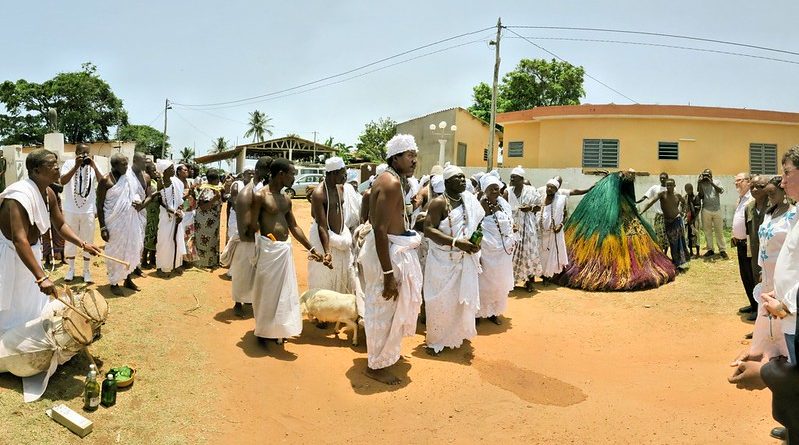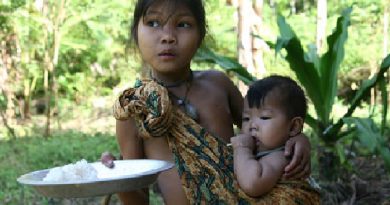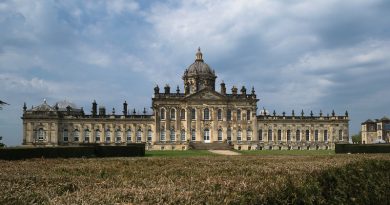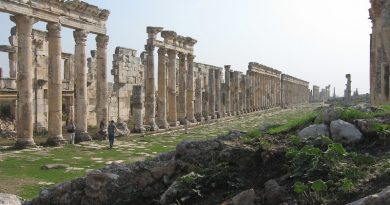Do You Do Voodoo? – The Real Story Behind the Tribal Myth
Culture Facts
Where: Practiced throughout the world, especially Haiti, West Africa & New Orleans by a population the size of Britain.
What’s it about: An act of ‘charity’ or a barbaric attempt to make money from human trade
Modern Day: Still practiced illegally amongst West African Tribes
The very word Voodoo conjures up mysterious images of zombies, plastic effigies with pins stuck in them capable of causing physical harm, and bizarre rituals in the dead of night in which bloody sacrifices are made. Such a mysterious, elusive and – to the westerner – entirely incomprehensible belief system could not fail to capture the imagination. In 1929, the word ‘zombie’ and its connection to the trance like state of voodoo practitioners possessed by the spirits, was bought to America by William B.Seabrook in his book ‘Magic Island’ about voodoo in Haiti.
In the movies
With the help of Hollywood and movies such as ‘The White Zombie’ (1932) or ‘Night of the Living Dead’ (1968), zombies became known as corpses brought back from the dead, and voodoo as something malevolent and dangerous. Even James Bond came up against the sinister power of Voodoo in the 1973 movie ‘Live and Let Die’ when faced with the infamousMr Big and his ability to ‘jinx’ someone and cause their death. Bond finds himself in the middle of a bloody and frenzied ritual that does nothing to portray the truth that for the main part, Voodoo is not used for malicious ends but is a way to praise the spirits and seek favours and healing in return. Voodoo has survived centuries of misrepresentation – a powerful and enduring religion that today has over 50 million followers worldwide.
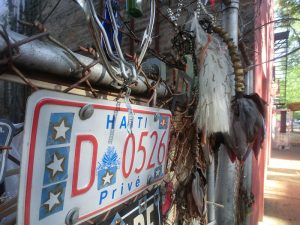 Rites and rituals
Rites and rituals
Voodoo rituals and practices vary not only between countries, but also between groups, having adapted over time to different circumstances. Its 400 year old roots lie among the Yaruba tribe from an area of Africa which today comprises Tongo, Benin, and parts of Nigeria. The general belief was in one Supreme Being – the Grand Maitre and a whole host of lesser deities called loa. All ceremonies are to honour the loa and keep them happy as they have the power to make good or bad on earth.
These ceremonies, often lasting all night, involve excessive singing, drumming and chanting, usually accompanied by gifts for the gods – a bottle of gin or palm wine is poured on to the ground, or a chicken or goat is slaughtered. The blood of the animal may be drunk to impart its supernatural powers, and the soul of the animal is released so that the loa may use it to rejuvenate itself. Each loa has its own preferred animal sacrifice as well as its own frenzied rhythms and type of drum that must be played to keep it happy.
The sacred drums are always played in an orchestra of three; The smallest drum is the bula, the middle drum the segond and the largest and most powerful is the manman. The loa are believed to be the spirits of the major forces of the universe and every day life such as good, evil and health but also the spirits of dead ancestors. From this, the ‘zombie’ image originally emerged as with the aid of a skilfully played manman drum, a dancer may become possessed by the loa; trembling and convulsing as the spirit enters their body and through them communicates to the whole village. They enter a trance like state which may last for hours or even days – a deeply spiritual phenomena that a worshipper may wait years to experience.
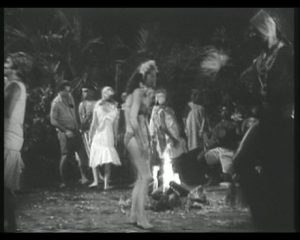 Many homes of Voodoo
Many homes of Voodoo
Benin remains the historic heart of Voodoo as from these shores more than 1.5 million West Africans were shipped abroad between the 16th and 18th centuries to work as slaves on the plantations of Haiti. All native religions were banned and the slaves baptised as Catholics, but the belief in the spirits proved too strong. The slaves found solace in their shared beliefs and expressed themselves in the only way available to them – song and dance. During years of persecution and struggle against the ruling class a new religion, Voodau, began to evolve amalgamating the tribal beliefs but also incorporating elements of the enforced Catholicism. Today there is nothing unusual about a Catholic in Haiti practising Voodoo. In fact, there they say, ‘Haiti is 80 percent Catholic and 100 percent Voodau’.
In Benin, as in Haiti, Voodoo was for years forced underground but today is openly thriving. In 1996 the government of Benin declared January 10th as National Voodoo Day. Thousands of people celebrated with song and dance lead by the supreme chief, Daagbo Hounon Houna, who slaughtered a goat and poured a bottle of Royal Stork Gin into the sand as offerings to the Gods. Haiti too has a calendar of celebrations – the largest being the Souvenance festival held on Good Friday to celebrate the loa at one of Haiti’s largest Voodoo temples; the Souvenance.
Voodoo communities are tight knit, lead by a single hougan (priest) or mambo (priestess) who hold absolute authority over the community. One of their main jobs is to heal the sick using a variety of herbs, potions and rituals. Recently, Mel B from the Spice Girls, while filming in Benin for a Channel 4 UK TV documentary on Voodoo, seized the opportunity to visit a hougan and pick up a ‘love potion’ for fellow former-spice Emma Bunton. Pity she couldn’t pick up a voodoo spell to aid her flagging music career.
It is in the healing that the infamous voodoo doll has its roots. Originating in Africa, a wooden figure called a bocheo (“empowered figure”) was made with small peg holes. This point of the body would then become a focal point for energy to promote healing. The plantation owners in Haiti feared these dolls and banned them, so the slaves created the figures undercover using cotton instead of wood.
Hoodoo in the Americas
Within Haiti, Voodoo became a uniting force amongst the slaves and peasants but also found its more sinister side: the ‘Petro’ loa. In opposition to the gentle, passive ‘Rada’ loa of Africa, the Petro are the ‘dark spirits’. The people needed a way to cope with the brutality of slavery and the Petro spirits offered a source of aggression and action which found a purpose amongst the uprisings of 1791 onwards culminating in the expulsion of the French from Haiti in 1804.
Many of the French fled from Haiti to Louisiana in the Deep South, USA, taking their servants and slaves with them. Again, Voodoo began to adapt to a new situation, amalgamating with the beliefs of the European slaves and incorporating elements of Native American nature folklore. Today, New Orleans is the cradle of this new form of African-American religion, more commonly known as Hoodoo. Hoodoo has moved away from Voodoo in some important ways and is described by many of its practitioners as folklore magic rather than religion. Unlike the Voodoo of Africa and Haiti, there is no strong hierarchy or initiation ceremonies. The emphasis is placed on personal power, usually for magical rather than medical purposes and as a sign of the times a hoodoo spell or ‘job’ has such descriptive names as “Money stay with Me” or “Love Me Oil”. One of the defining characteristics is the use of a mojo bag or conjure hand – a flannel bag used to carry the roots, herbs and other curious needed for potions or rituals.
Over the centuries Voodoo has both terrified and intrigued those that come into contact with it. Spirits, songs and rituals vary widely throughout the Voodoo communities of the world but one generalisation can be made: contrary to popular stereotypes voodoo is not a source of evil and malice, but a promotion of healing.
MORE INFORMATION
Rites of Passage
An extract from Time Europe magazine where one man finds himself in Benin on ‘National Voodoo Day’.
And the Dead Shall Rise…
Detailed discussion of the early cinematic films incorporating zombies.
Hoodoo
Everything you want to know about Hoodoo – what it is, and what its not.
Books
‘Do You do voodoo?: the real religion behind zombies and voodoo dolls’ by Shannon R. Turlington. (1999) London: South Street Press
A great little easy to read book that thoroughly introduces you to the world of voodoo.
‘Culture and Customs of Haiti’ by J. Michael Dash
(2001) Greenwood Press
Brilliant, detailed, book for reading all about Haiti and how Voodoo beliefs fit into everyday life.
Main Image: Akodessewa marché des féticheurs where Vodun (voodoo) fetishes, dolls and charms are sold to believers in order to convince the spirits to help them. – Lomé Togo, Dan Sloan, Flickr Creative Commons
By Debbie Fabb

